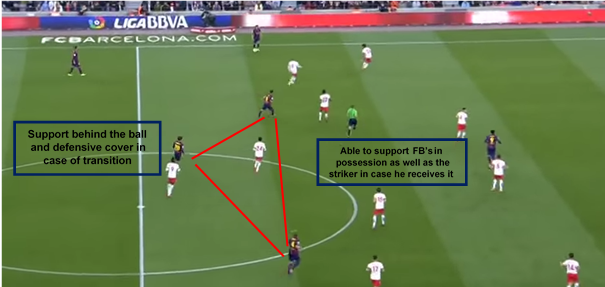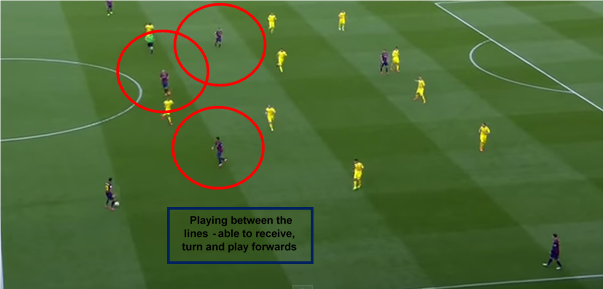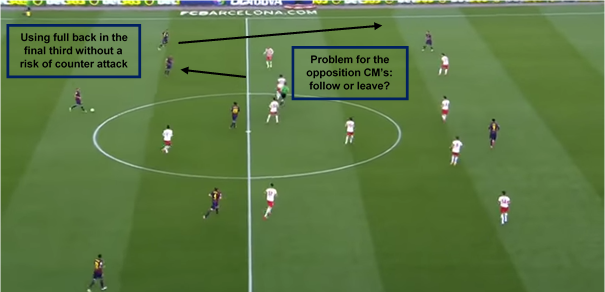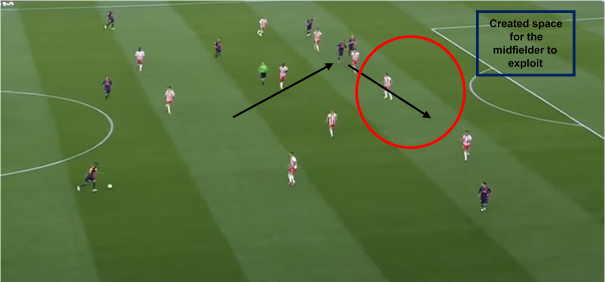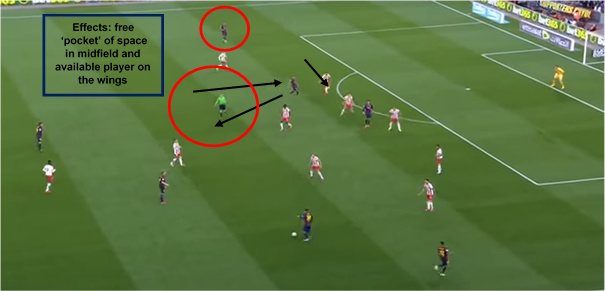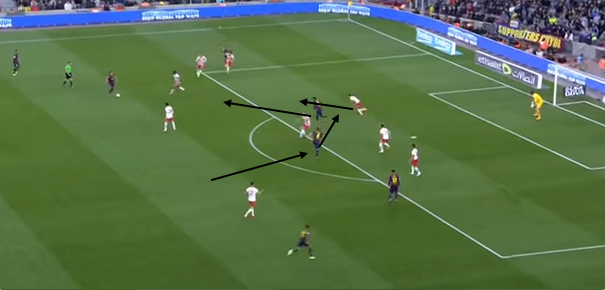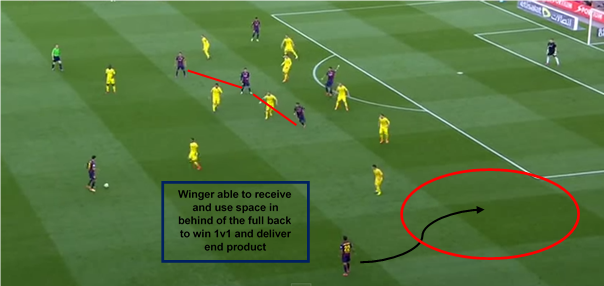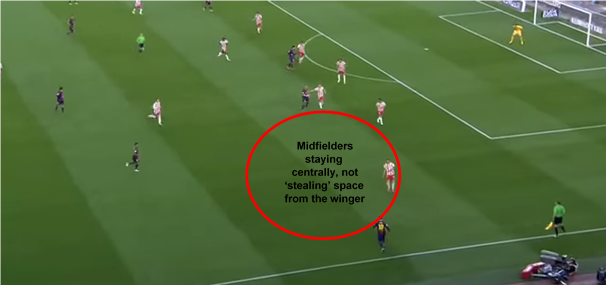By Alex Trukan
The system with a three midfielders operating in a triangle is widely known and implemented all around the world. Over the last years, numerous variations of this tactics have been developed and used what has led to the successes of the teams like FC Barcelona or Bayern Munich. One of the crucial components of this system are movements of the midfield three, which not only enable more effective build-up play but also support forwards in the final third of the pitch.
Starting positions – basic shape
When the defenders are in possession during building up play from the back, three midfielders form a triangle with a point down (defensive midfielder being positioned closer to own goal than the two offensive midfielders). That creates some defensive cover and great attacking potential with two midfielders playing off lone striker’s shoulder.
It is crucial that all of the three midfielders provide appropriate supporting positions, being ‘connected’ to the ball (player in possession able to make a pass) and able to turn and play forwards at all times.
One of the movement options for the midfielder is to drop into a ‘pocket’ of space between CD and a FB. That enables full back to make a forward run, without leaving free space in behind him. This movement can be also used if midfielders are tightly marked and unable to turn and play forwards.
Horizontal and diagonal runs
As the ball progresses into the middle and final thirds, the role of the midfielders change into a more offensive one. In this phase, the triangle shape becomes more fluid, with midfielder often making forward runs to create and exploit space. It can be seen on the example below, that offensive midfielder moves towards one side of the pitch in order to create space on the other side and exploit it by making a diagonal run.
Vertical runs to create space
Another example of a midfielder’s movement in a final third is a vertical run to create space and receive. In this case, the midfielder makes a run towards the striker, to then come back and receive the ball in the created space. This type of movement also often drags the defenders into central areas creating space on the wings.
Cooperation with striker’s unit
Vertical (forward) runs often lead to joining the forwards’ unit as well as interchange of positions with a forward who drops deeper. That creates a problem for a central defender, who needs to decide which player to cover. In a lot of situations, the central defender tracks the striker what creates space for midfielder to receive.
Creating space on the wings
Cooperation of midfielders with wingers is often based around creating space and isolating 1v1 situations. In this situation, all three midfielders stay narrow, what drags the opposition to stay compact and move towards the ball. That in turn, creates space for wingers to receive and attack through the wide areas.
[wpsharely id="2988"][/wpsharely]As soon as the winger receives the ball, the midfielders stay in the central areas, moving only couple of yards in case support was needed. That isolates the winger and the opposition full back, increasing the chance of winning 1v1 duel. Moving towards the ball when the play is switched is very common mistake made by the central midfielders.
All of the attacking movements and patterns are useful and can be effective if trained appropriately, however, as coaches, we should also remember to allow enough room for creativity and improvisation to take place. That can be crucial especially for innovative and technically excellent midfielders.
By Alex Trukan, Development Coach, Nottingham Forest

